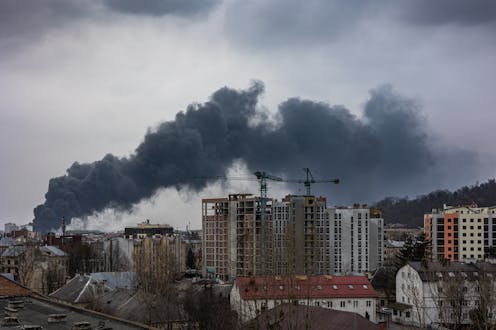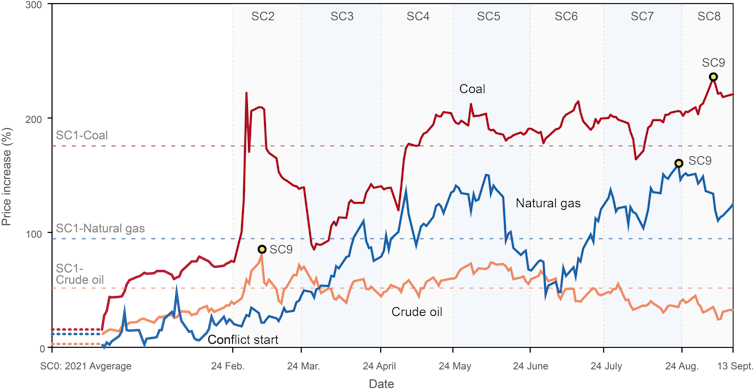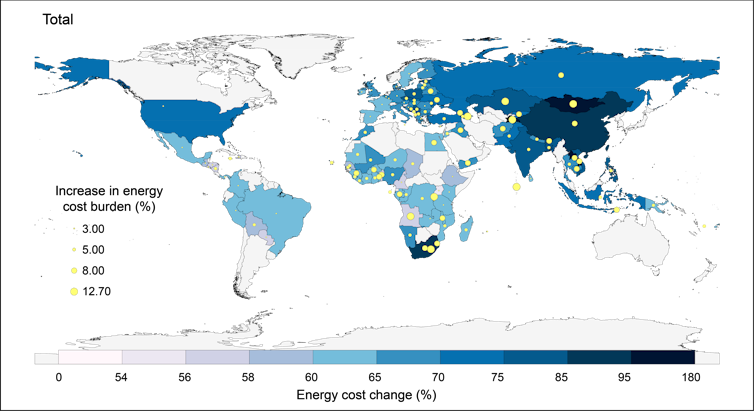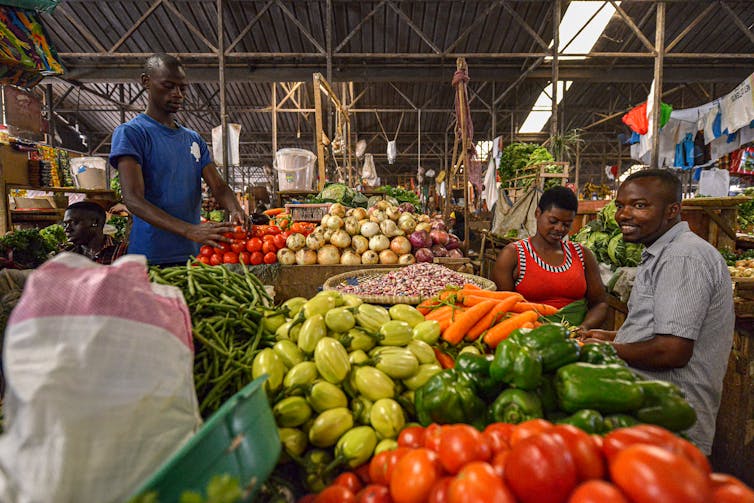
The Russia–Ukraine war has exacerbated an energy crisis that directly affects the costs of heating, cooling, lighting and mobility, and indirectly pushed up the costs of other goods and services throughout global supply chains. While all households are affected, they are affected in different ways depending on their income, how they spend their money, and how and where the products that they are buying were produced. Targeted energy assistance can help vulnerable households during this crisis but for that we need to know who is affected, to what degree and why.
To investigate this, we have modelled the direct and indirect impacts of increased energy prices in 116 countries, covering 87.4% of the global population, with a focus on developing countries. Our results are now published in Nature Energy.
Unequal surge in household burden
Since the conflict began almost exactly a year ago, energy prices have increased sharply but to varying degrees depending on the type of fuel. The following graph shows the price fluctuations:

We used a computer program to simulate the impact these energy price increases would have for households around the world. On the basis of a set of energy price scenarios, we show that total energy costs (direct and indirect) for households have increased by at least 63% and possibly as much as 113% (that is, more than doubled). This contributes to an increase in global household expenditure of between 2.7% and 4.8%. This is a huge shift, equivalent to a massive economic shock: households around the world have suddenly been required to find a few percent of extra income just to maintain their pre-2022 living standards.
The wide uncertainty is because such a big part of the increase in household expenditure is for indirect energy consumption – energy used to produce the stuff or food that we consume. So for instance if someone in South Africa eats imported beef, the price of that beef might be affected by the cost of energy for the fertilizer (from Germany, perhaps) that is used to produce soybeans in Brazil which then feed the cows, along with the associated costs of fuel for transport. Factoring in lots of things like this means we cannot be too precise.
We do know that wealthier groups tend to have higher energy costs on goods and services, while poorer households tend to spend more on meeting daily needs such as food and direct energy. More vulnerable households tend to be more reliant on purchasing energy-intensive, processed goods and services.

In some countries in sub-Saharan Africa, household energy costs increased by up to three times the global average. In Rwanda, for instance, it increased by 11%. Residential energy use in these countries is less dependent on fossil fuels (99.6% of households in Rwanda cooked with wood and other biomass in 2018, for example), but there are huge indirect costs through the supply chain especially for food.
Additional poverty caused by the energy crisis
Rising energy prices are making households more vulnerable to energy poverty, particularly during the cold season. People in energy poverty do not have access to adequate heating, cooling, lighting, and energy to power appliances. The global energy price spikes would increase the number of energy-poor households, that is their energy costs account for more than 10% of total expenditures somewhere between 166 million and 538 million people (2.4% to 7.9% of the global population).
Also, under these cost-of-living pressures, somewhere between 78 million and 141 million people could be pushed below the World Bank’s extreme poverty line.

Missed opportunities
The energy price increases due to the Russian-Ukraine war would not have had such an extreme impact if better policy decisions had been made before. Take, for example, the quite recent COVID crisis that provided a great opportunity to redirect investments toward the energy transition and loosening the dependence on fossil fuel imports given the huge amounts of money used to kick-start the economy. Yet a large share of the public funds was invested in fossil fuel infrastructure.
A similar picture emerges today as governments extend brown coal extraction (in Germany), build new coal infrastructure (for instance, in the UK and many developing countries such as Pakistan), or invest in liquid natural gas terminals all of which are highly carbon intensive or hugely inefficient. These kinds of solutions lock us into a very expensive infrastructure that we shouldn’t have in the first place if we take climate change seriously.
Despite multiple global treaties and agreements to reduce carbon emissions, the slow and hesitant progress in the energy transition is reflected in the dependency on fossil fuel imports and has amplified the severity of the cost-of-living crisis. This crisis has pushed a number of economies into recession, caused higher inflation, and put painful cost-of-living pressures on vulnerable households around the world. This unprecedented global energy crisis should come as a reminder that an energy system highly reliant on fossil fuels perpetuates energy-security risks and accelerates climate change.
Jin Yan receives funding from China Scholarship Council PhD Program.
Yuli Shan receives funding from UKRI Research England and NSFC. He is affiliated with the University of Birmingham and the University of Groningen.
Yuru Guan receives funding from China Scholarship Council PhD program.
Klaus Hubacek does not work for, consult, own shares in or receive funding from any company or organisation that would benefit from this article, and has disclosed no relevant affiliations beyond their academic appointment.
This article was originally published on The Conversation. Read the original article.







